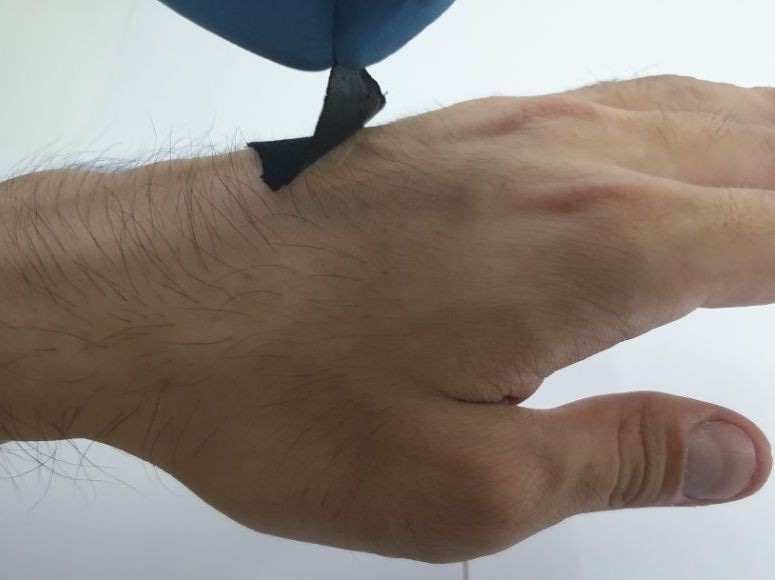May 23 2019
Wearable electronics that stick to the skin are an upcoming trend in health sensor technology for their capacity to track a range of human activities, from step count to heart rate. But discovering the perfect way to stick a device to the body has been tough. Presently, a team of scientists describe the progress of a graphene-based adhesive biosensor inspired by octopus “suckers.” They have published their findings in ACS Applied Materials & Interfaces.
 A graphene-based adhesive biosensor inspired by octopus “suckers” is flexible and holds up in wet and dry environments. (Image credit: Adapted from ACS Appl. Mater. Interfaces 2019, 11, 16951-16957)
A graphene-based adhesive biosensor inspired by octopus “suckers” is flexible and holds up in wet and dry environments. (Image credit: Adapted from ACS Appl. Mater. Interfaces 2019, 11, 16951-16957)
For a wearable sensor to be really effective, it must be flexible and stick entirely to both dry and wet skin but still be comfortable for the wearer. Thus, the selection of substrate, the material that the sensing compounds rest upon, is critical. Woven yarn is a common substrate, but it every so often does not totally contact the skin, particularly if that skin is hairy. Typical threads and yarns are also susceptible to wet environments. Adhesives tend to lose their grip underwater, and in dry environments, they can get very sticky and become painful to peel off. To overcome these issues, Changhyun Pang, Changsoon Choi, and colleagues aimed to create an economical, graphene-based sensor with a yarn-like substrate that uses octopus-like suckers to stick to skin.
An elastic polyurethane and polyester fabric was coated by the scientists with graphene oxide and soaked in L-ascorbic acid to aid in conductivity while still preserving its strength and stretch. From there, they integrated a coating of a graphene and poly(dimethylsiloxane) (PDMS) film to form a conductive path from the fabric to the skin. Lastly, they etched minute, octopus-like patterns on the film. The sensor could detect a broad range of motions and pressures in both dry and wet environments. The device also could track an assortment of human activities, including pulse, electrocardiogram signals, and speech patterns, exhibiting its probable use in medical applications, the scientists say.
The researchers received funding from the National Research Foundation of Korea, the Korean Ministry of Education, and the Korean Ministry of Science.